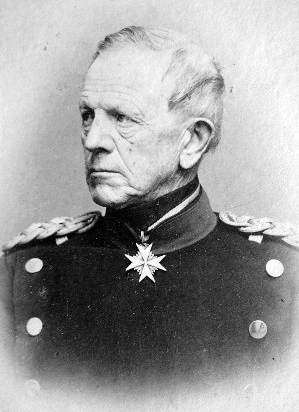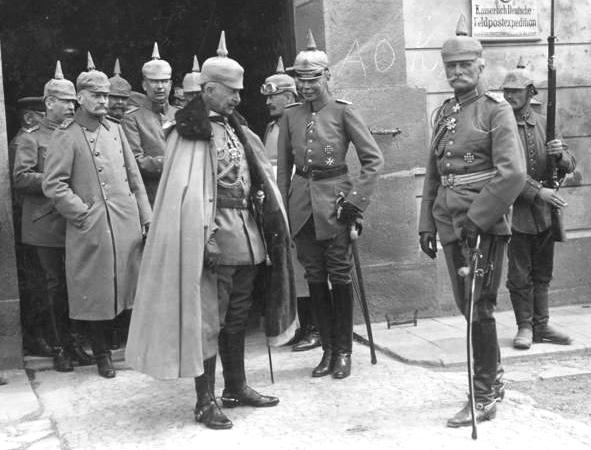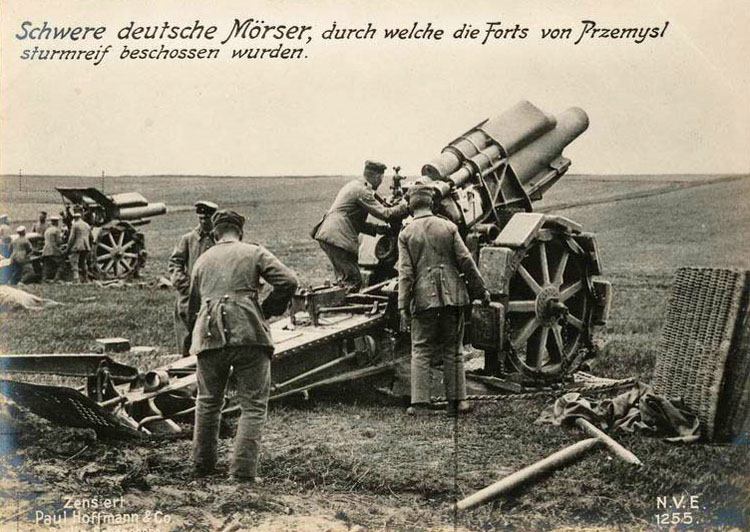|
Great Retreat (Russian)
The Great Retreat was a strategic withdrawal on the Eastern Front of World War I in 1915. The Imperial Russian Army gave up the salient in Galicia and the Vistula Land. The Russian Empire's critically under-equipped military suffered great losses in the Central Powers' July–September summer offensive operations, which led to the Stavka ordering a withdrawal to shorten the front lines and avoid the potential encirclement of large Russian forces in the salient. While the withdrawal itself was relatively well-conducted, it was a severe blow to Russian morale. Background Following the German success with their Gorlice–Tarnów offensive, Hans von Seeckt proposed that August von Mackensen's Eleventh Army should advance north towards Brest-Litovsk, with their flanks shielded by the rivers Vistula and Bug. Mackensen and Chief of the German Great General Staff Erich von Falkenhayn supported this strategy of attacking the Russian salient in Poland, and forcing a decisive batt ... [...More Info...] [...Related Items...] OR: [Wikipedia] [Google] [Baidu] |
Eastern Front (World War I)
The Eastern Front or Eastern Theater of World War I (german: Ostfront; ro, Frontul de răsărit; russian: Восточный фронт, Vostochny front) was a theater of operations that encompassed at its greatest extent the entire frontier between Russia and Romania on one side and Austria-Hungary, Bulgaria, the Ottoman Empire, and Germany on the other. It stretched from the Baltic Sea in the north to the Black Sea in the south, involved most of Eastern Europe, and stretched deep into Central Europe as well. The term contrasts with "Western Front", which was being fought in Belgium and France. During 1910, Russian General Yuri Danilov developed "Plan 19" under which four armies would invade East Prussia. This plan was criticised as Austria-Hungary could be a greater threat than the German Empire. So instead of four armies invading East Prussia, the Russians planned to send two armies to East Prussia, and two armies to defend against Austro-Hungarian forces invading from Gal ... [...More Info...] [...Related Items...] OR: [Wikipedia] [Google] [Baidu] |
Galicia (Eastern Europe)
Galicia ()"Galicia" '''' ( uk, Галичина, translit=Halychyna ; pl, Galicja; yi, גאַליציע) is a historical and geographic region spanning what is now southeastern and western , long part of the . ... [...More Info...] [...Related Items...] OR: [Wikipedia] [Google] [Baidu] |
Salient (military)
A salient, also known as a bulge, is a battlefield feature that projects into enemy territory. The salient is surrounded by the enemy on multiple sides, making the troops occupying the salient vulnerable. The opponent's front line that borders a salient is referred to as a re-entrant – that is, an angle pointing inwards. A deep salient is vulnerable to being "pinched off" through the base, and this will result in a pocket in which the forces in the salient become isolated and without a supply line. On the other hand, a breakout of the forces within the salient through its tip can threaten the rear areas of the opposing forces outside it, leaving them open to an attack from behind. Implementation Salients can be formed in a number of ways. An attacker can produce a salient in the defender's line by either intentionally making a pincer movement around the military flanks of a strongpoint, which becomes the tip of the salient, or by making a broad, frontal attack which is hel ... [...More Info...] [...Related Items...] OR: [Wikipedia] [Google] [Baidu] |
German General Staff
The German General Staff, originally the Prussian General Staff and officially the Great General Staff (german: Großer Generalstab), was a full-time body at the head of the Prussian Army and later, the German Army, responsible for the continuous study of all aspects of war, and for drawing up and reviewing plans for mobilization or campaign. It existed unofficially from 1806, and was formally established by law in 1814, the first general staff in existence. It was distinguished by the formal selection of its officers by intelligence and proven merit rather than patronage or wealth, and by the exhaustive and rigorously structured training which its staff officers undertook. Its rise and development gave the German armed forces a major strategic advantage over their adversaries for nearly a century and a half. The Prussian General Staff also enjoyed greater freedom from political control than its contemporaries, and this autonomy was enshrined in law on the unification of German ... [...More Info...] [...Related Items...] OR: [Wikipedia] [Google] [Baidu] |
Bug (river)
uk, Західний Буг be, Захо́дні Буг , name_etymology = , image = Wyszkow_Bug.jpg , image_size = 250 , image_caption = Bug River in the vicinity of Wyszków, Poland , map = Vistula river map.png , map_size = 250px , map_caption = Bug River through Ukraine, Belarus and Poland , pushpin_map = , pushpin_map_size = 250px , pushpin_map_caption= , subdivision_type1 = Country , subdivision_name1 = Poland, Belarus, Ukraine , subdivision_type2 = , subdivision_name2 = , subdivision_type3 = VoivodeshipVoblastOblast , subdivision_name3 = Podlaskie, Mazovian, Lublin, Brest, Lviv , subdivision_type4 = , subdivision_name4 = , subdivision_type5 = , subdivision_name5 = , length = , width_min = , width_avg = , width_max = , depth_min = , depth_avg = , depth_max = , discharge1_locatio ... [...More Info...] [...Related Items...] OR: [Wikipedia] [Google] [Baidu] |
Vistula
The Vistula (; pl, Wisła, ) is the longest river in Poland and the ninth-longest river in Europe, at in length. The drainage basin, reaching into three other nations, covers , of which is in Poland. The Vistula rises at Barania Góra in the south of Poland, above sea level in the Silesian Beskids (western part of Carpathian Mountains), where it begins with the Little White Vistula (''Biała Wisełka'') and the Black Little Vistula (''Czarna Wisełka''). It flows through Poland's largest cities, including Kraków, Sandomierz, Warsaw, Płock, Włocławek, Toruń, Bydgoszcz, Świecie, Grudziądz, Tczew and Gdańsk. It empties into the Vistula Lagoon (''Zalew Wiślany'') or directly into the Gdańsk Bay of the Baltic Sea with a delta of six main branches (Leniwka, Przekop, Śmiała Wisła, Martwa Wisła, Nogat and Szkarpawa). The river is often associated with Polish culture, history and national identity. It is the country's most important waterway and natural sy ... [...More Info...] [...Related Items...] OR: [Wikipedia] [Google] [Baidu] |
Brest, Belarus
Brest ( be, Брэст / Берасьце, Bieraście, ; russian: Брест, ; uk, Берестя, Berestia; lt, Brasta; pl, Brześć; yi, בריסק, Brisk), formerly Brest-Litovsk (russian: Брест-Литовск, lit=Lithuanian Brest; be, links=no, translit=Berastze Litouski (Berastze), Берасце Літоўскі (Берасце); lt, links=no, Lietuvos Brasta; pl, links=no, Brześć Litewski, ), Brest-on-the-Bug ( pl, links=no, Brześć nad Bugiem), is a city (population 350,616 in 2019) in Belarus at the border with Poland opposite the Polish city of Terespol, where the Bug (river), Bug and Mukhavets rivers meet, making it a border town. It is the capital city of the Brest Region. Brest is a historical site for many cultures, as it hosted important historical events, such as the Union of Brest and Treaty of Brest-Litovsk. Furthermore, the Brest Fortress was recognized by the Soviet Union as a Hero Fortress in honour of the defense of Brest Fortress in Jun ... [...More Info...] [...Related Items...] OR: [Wikipedia] [Google] [Baidu] |
11th Army (German Empire)
The 11th Army (german: 11. Armee / Armeeoberkommando 11 / A.O.K. 11) was an army level command of the German Army in World War I. It was formed in March 1915 in Kassel originally to serve on the Western Front but was transported to Galicia for service on the Eastern Front. The army was dissolved on 8 September 1915, but reformed on 23 September 1915 for the Serbian Campaign. It was finally dissolved on 7 January 1919. History The 11th Army was formed in early 1915. It briefly fought on the Western Front during the Battle of Ypres, holding the line against the Allied attack. On 22 April, it was transferred and placed with the Austrian 4th Army under Mackensen's command, behind the Gorlice–Tarnow gap, south of the Vistula River. In July 1915, the 11th Army advanced into Russian territory in a general German offensive. The 11th Army was dissolved on 8 September 1915. On 23 September 1915 a new 11th Army was created for the Serbian Campaign under command of Max von Gall ... [...More Info...] [...Related Items...] OR: [Wikipedia] [Google] [Baidu] |
Hans Von Seeckt
Johannes "Hans" Friedrich Leopold von Seeckt (22 April 1866 – 27 December 1936) was a German military officer who served as Chief of Staff to August von Mackensen and was a central figure in planning the victories Mackensen achieved for Germany in the east during the First World War. During the years of the Weimar Republic he was chief of staff for the ''Reichswehr'' from 1919 to 1920 and commander in chief of the German Army from 1920 until he resigned in October 1926. During this period he engaged in the reorganization of the army and laid the foundation for the doctrine, tactics, organization, and training of the German army. By the time Seeckt left the German Army in 1926 the ''Reichswehr'' had a clear, standardized operational doctrine, as well as a precise theory on the future methods of combat which greatly influenced the military campaigns fought by the ''Wehrmacht'' during the first half of the Second World War. While Seeckt undertook multiple programs to get around the ... [...More Info...] [...Related Items...] OR: [Wikipedia] [Google] [Baidu] |
Gorlice–Tarnów Offensive
The Gorlice–Tarnów offensive during World War I was initially conceived as a minor German offensive to relieve Russian pressure on the Austro-Hungarians to their south on the Eastern Front, but resulted in the Central Powers' chief offensive effort of 1915, causing the total collapse of the Russian lines and their retreat far into Russia. The continued series of actions lasted the majority of the campaigning season for 1915, starting in early May and only ending due to bad weather in October. Mackensen viewed securing a breakthrough as the first phase of an operation, which would then lead to a Russian retreat from the Dukla Pass, and their positions north of the Vistula. Background In the early months of war on the Eastern Front, the German Eighth Army conducted a series of almost miraculous actions against the two Russian armies facing them. After surrounding and then destroying the Russian Second Army at the Battle of Tannenberg in late August, Paul von Hindenburg and ... [...More Info...] [...Related Items...] OR: [Wikipedia] [Google] [Baidu] |
Encirclement
Encirclement is a military term for the situation when a force or target is isolated and surrounded by enemy forces. The situation is highly dangerous for the encircled force. At the strategic level, it cannot receive supplies or reinforcements, and on the tactical level, the units in the force can be subject to an attack from several sides. Lastly, since the force cannot retreat, unless it is relieved or can break out, it must fight to the death or surrender. A special kind of encirclement is the siege. In that case, the encircled forces are enveloped in a fortified position in which long-lasting supplies and strong defences are in place, allowing them to withstand attacks. Sieges have taken place in almost all eras of warfare. History Encirclement has been used throughout the centuries by military leaders, including generals such as Spartacus, Alexander the Great, Julius Caesar, Genghis Khan, Khalid bin Waleed, Hannibal, Sun Tzu, Yi Sun Shin, Shaka Zulu, von Wall ... [...More Info...] [...Related Items...] OR: [Wikipedia] [Google] [Baidu] |
Stavka
The ''Stavka'' (Russian and Ukrainian: Ставка) is a name of the high command of the armed forces formerly in the Russian Empire, Soviet Union and currently in Ukraine. In Imperial Russia ''Stavka'' referred to the administrative staff, and to the General Headquarters in the late 19th-century Imperial Russian armed forces and subsequently in the Soviet Union. In Western literature it is sometimes written in uppercase (''STAVKA''), although whether it is an acronym is a subject of debate. ''Stavka'' may refer to its members, as well as to the headquarters location (its original meaning from the old Russian word ''ставка'', 'tent'). Stavka of the Supreme Commander during World War I The commander-in-chief of the Russian army at the beginning of World War I was Grand Duke Nicholas Nicholaievitch, a grandson of Tsar Nicholas I. Appointed at the last minute in August 1914, he played no part in formulating the military plans in use at the beginning of the war. ... [...More Info...] [...Related Items...] OR: [Wikipedia] [Google] [Baidu] |







